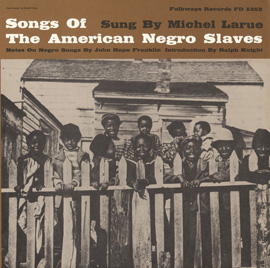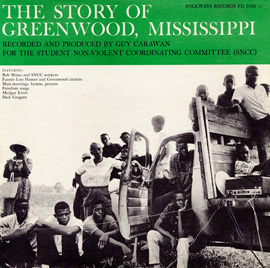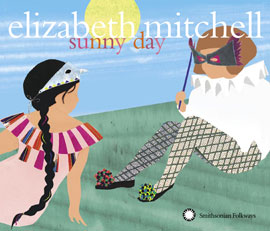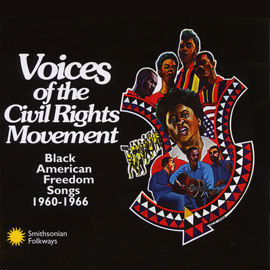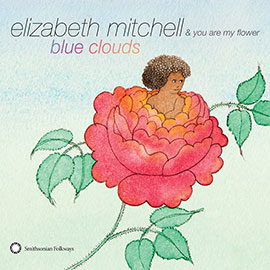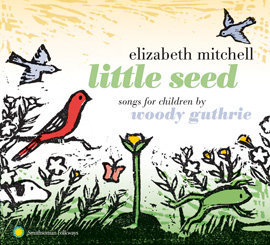Summary
Students will learn the history behind "This Little Light of Mine", following the song through slavery, the civil rights movement, and up to its current day applications. Students will also learn to sing the song itself in multiple languages and will be prompted to write about their learning experiences after each session. At the end, there will be an opportunity for students to add their own verses to the song, based on the writing they did through each portion of the lesson.
Suggested Grade Levels: 4-8
Country: America
Culture Group: African-American
Genre: Spiritual
Instruments: Voice and hand clapping
Language: English and Zulu
Co-Curricular Areas: Social Studies, History
National Standards: 1, 3, 7, 8, 9
Prerequisites: Basic knowledge regarding the history of slavery and the civil rights movement in the United States is helpful but not required.
Objectives:
- Learning to sing on pitch and keep a steady beat (1)
- Learning to sing in simple two part harmony (1)
- Exploring melodic variety and basic vocal improvisation/embellishment (3)
- Taking musical and leadership inactive (8)
- Learning to write and sing lyrics based on life experiences (1,8)
- Developing an appreciation for artists who have performed and adapted this song throughout the years, understanding their stories and struggles (7,8,9)
- Discovering the historical significance behind "This Little Light of Mine" (9)
Material:
- "This Little Light of Mine" by Michel LaRue from Songs of the American Negro Slaves (FW05252)
- "This Little Light of Mine" from The Story of Greenwood Mississippi (SFW05593)
- "This Little Light of Mine" by Elizabeth Mitchell from Sunny Day (SFW45064)
- "This Little Light of Mine" by Betty Fikes from Voices of the Civil Rights Movement: Black American Freedom songs 1960-1966 (SFW40084)
Lesson Segments:
- Shining on Through Slavery (1,8,9)
- In Light of Civil Rights (1,3,7,8,9)
- Shine for the World to See (1,3,7,8,9)
- We are that Light (1,3,7,8,9)
1. Shining on Through Slavery
- Learning the "common melody" (the most well known melodic version) of "This Little Light of Mine" through aural tradition
- Ask students if they are familiar with the song
- If so, invite those who know it to figure out one cohesive version and sing it for the class
- If possible, have them teach it to the rest of the class, line by line
- Finally, sing through the song as a class (you can encourage the students to clap along if steady beat is needed)
- Melodic Difference
- Play "This Little Light of Mine" by Michel LaRue from Songs of the American Negro Slaves (FW05252)
- Ask students to identify melodic differences between "common melody" and LaRue's rendition
- Discuss the conditions under which LaRue's version of the song may have been sung and why there are many versions of "This Little Light of Mine"
- Explain the idea of Aural Tradition and tell the children that they have already learned the "common melody" by employing aural tradition
- History of Michel LaRue's "This Little Light of Mine"
- If students are not yet familiar with it, provide a brief overview of the history of slavery in America
- Ask students what they think the purpose of this song was during slavery
- Read to them from the liner notes regarding the purpose of song and music during said time:
"What can we say of this music? How could words begin to convey the impossibly complex rhythms, the un-believable cohesion of meaning and tone, the wild, terrible beauty they possess?"
Fredrick Douglass, in his autobiography, writes about the significance of singing by slaves:
"I did not, when a slave, understand the deep meaning of those rude and apparently incoherent songs. I was myself within the circle; so that I neither saw nor heard as those without might see and hear. They told a tale of woe which was then altogether beyond my feeble comprehension; they were tones loud, long, and deep; they breathed the prayer and complaint of souls boiling over with the bitterest anguish. Every tone was a testimony against slavery."
- Read aloud Michel LaRue's quote on his rendition of "This Little Light of Mine":
"I have heard this song in so many versions I hardly know which to use"
Extension (Optional): Journal Entry-
a. Prompt: Why do you think it's important to learn "This Little Light of Mine" and the history behind it?
Assessment (can be applied to end of lessons 1-3):
At the end of the lesson address the class as a whole as to their engagement, behavior, and focus during the lesson. If praise is not warrant, suggest ways in which they can improve their collective performance for the next class. If you choose to do the extension project, you can instead read through students' journals and comment on their reflections, effectively starting a written dialog with each student.
2. In Light of Civil Rights
- Review of session 1: Shining on Through Slavery
- Ask for a volunteer to provide a 20 second summary of what was discussed and learned in the previous session (if no one volunteers, can break class up into groups of 5, give students 30 seconds to discuss, and have each group report on one aspect of last lesson)
- History of Civil Rights Movement and SNCC
- Ask students to share what they know about the Civil Rights Movement or provide a brief historical overview
- Have students read album abstract regarding SNCC:
"The Student Non-Violent Coordination Committee (SNCC) was an organization based in Greenwood, Mississippi that fought for voter registration rights for African-American citizens. Powered by the relentless and courageous efforts of young activists, SNCC assembled more than 80,000 Blacks to vote in the Freedom Ballot campaign of 1963. SNCC organized the campaign in order to allow African-American voters to participate in an election process from which they had long been forced out, and to allow them to support a candidate of their choice. This recording, narrated by SNCC co-founder Bob Moses, is a compilation of testimonies highlighting the struggle endured by African-Americans in SNCC during this time. Voter Cleveland Jordan explains the intent of those involved perfectly when he says, 'We don't mean to fight and we don't mean to run. We just mean to go to the polls and get our freedom'" - Song variation and purpose
- Play "This Little Light of Mine" from The Story of Greenwood Mississippi
- Have students sing "main melody" along with the recording
- Ask if anyone is interested in/willing to try the improvisational "call" part, as exemplified by the preacher in the recording
- Discuss the purpose and role played by "This Little Light of Mine" in the context of the civil rights movement and how the version of this song differs from that sung by Michel LaRue
Extension (Optional): Journal Entry-
a. Prompt: Write about a song in your life that has meant a lot to you. Why was it important to you and what purpose did it serve?
Assessment (can be applied to end of lessons 1-3):
At the end of the lesson address the class as a whole as to their engagement, behavior, and focus during the lesson. If praise is not warrant, suggest ways in which they can improve their collective performance for the next class. If you choose to do the extension project, you can instead read through students' journals and comment on their reflections, effectively starting a written dialog with each student.
3. Shine for the World to See
- Review of session 2: In Light of Civil Rights
- Ask for a volunteer to provide a 20 second summary of what was discussed and learned in the previous session (if no one volunteers, can ask various students to each provide one comment about what they learned in the last lesson)
- History of South Africa and Agape
- Ask students to share what the know about the country and history of South Africa, if their previous knowledge is limited, provide them with a few basic facts about the country/a brief historical overview
- Introduce students to the Agape Children's Choir
- Song variation and purpose
- Play "This Little Light of Mine" from Elizabeth Mitchell's Sunny Day (SFW45064)
- Read students the following liner notes written by Elizabeth Mitchell for "This Little Light of Mine":
Elizabeth Mitchell, vocals, harmonium; Daniel Littleton, vocals, guitar; Storey Littleton and the Children of Agape Choir, vocals
Fannie Lou Hamer, a hero and a leader of the Civil Rights Movement, sang this song outside the Democratic National Convention in 1964, where she was fighting for all Americans, regardless of race, to receive the right to vote and to have real political representation. Her efforts helped to change the world. Everywhere we have played over the years, people know and love this song and sing along.
This recording was made at the home studio of Dan Zanes, with the Children of Agape Choir. I came to know the choir through the Geier Family, whom I had known during my years of teaching on Roosevelt Island. Their older daughter had been a student of mine. The Geiers' younger daughter, Hallie, died after being struck by a car in 2004 at the age of 11. Hallie was an activist and a poet, and had raised money to donate to children in sub-Saharan Africa. The Geiers were determined to keep Hallie's remarkable spirit of optimism and compassion alive, and they brought the Children of Agape choir to the United States for the very first time. The children are all from the Agape orphanage in South Africa, and have since been the subject of an award-winning documentary called We Are Together.
- Write the following lyrics to the chorus in English and Zulu on the board and have the students sing along:
English:
this little light of mine, i'm gonna let it shine
this little light of mine, i'm gonna let it shine
this little light of mine, i'm gonna let it shine
let it shine, let it shine, let it shine
Zulu:
lesi bani sam, ngizosikhanyisa "LESS-y BAH-ni-Sahm Geezo-see-KANyee-sahm"
lesi bani sam, ngizosikhanyisa "LESS-y BAH-ni-Sahm Geezo-see-KANyee-sahm"
lesi bani sam, ngizosikhanyisa "LESS-y BAH-ni-Sahm Geezo-see-KANyee-sahm"
masikhanye, masikhanye, masikhanye "MAS-ee Kan, MAS-ee Kan, MAS-ee Kan"
Extension (Optional): Journal Entry-
a. Prompt: What have you learned about the world and yourself through studying these three versions of "This Little Light of Mine"?
Assessment (can be applied to end of lessons 1-3):
At the end of the lesson address the class as a whole as to their engagement, behavior, and focus during the lesson. If praise is not warrant, suggest ways in which they can improve their collective performance for the next class. If you choose to do the extension project, you can instead read through students' journals and comment on their reflections, effectively starting a written dialog with each student.
4. We are the Light
- Review of sessions 1-3:
- Ask three students to summarize what you've learned about "This Little Light of Mine" and the music and stories behind it (if students are having trouble concentrating, you could brainstorm or outline this on the board)
- Lyric writing conversation
- Ask if students have written songs or lyrics before- if so ask them to explain what the lyrics were about, and how they went about writing them
- Brainstorm some possible motivations behind the lyrics of a song
- Play "This Little Light of Mine" sung by Betty Fikes on Voices of the Civil Rights Movement: Black American Freedom songs 1960-1966 (SFW40084) and read aloud the liner notes"
"This Little Light of Mine"
'This rendition is led by Betty Mae Fikes with the Selma youth Freedom Choir and is accompanied by piano. The song maintains enough of its traditional structure to allow for full participation by the congregation. The gospel influence is evident in Fikes' statement of the initiating line. One of the strongest songleaders to come out of the Movement, Fikes uses her unique and signature call to initiate each new verse halfway through the last line of the old verse. The gospel change in melody is picked up and maintained by the full congregation...songleaders often localized songs by adding lyrics peculiar to their immediate situation. Many of the songs from Selma, Alabama, used names of local personalities. For example, Fikes sings 'Tell Jim Clark" (sheriff of Selma) and "Tell Al Lingo" (head of the Alabama State Troopers), calling their names as symbols of what the Selma Movement was fighting. Movement leaders were also named in the lyrics. Spontaneous cheers and clapping greet Fikes's lines, recognition of her skill as a songleader and on- the-spot chronicler of the mood of the congregation."
- Lyric construction
- Introduce the idea of each student writing their own lyrics to "This Little Light of Mine" main melody (which is the melody exemplified in the Elizabeth Mitchell recording)
- Ask each student to brainstorm a motive and then use it to construct one verse based upon said intention
- Invite a few brave students to share their drafted lyrics with the class
- Representation and performance
- Invite the class to collectively settle on a motive and draft a verse of "This Little Light of Mine" that represents them as a group
- Write their lyrics up on the board and then have the class sing through it using the "common melody"
Extension (Optional): What's the point?:
a. Prompt: Ask students why they think it's important to learn about the history of songs and to create new lyrics and music for various purposes
Assessment:
Through journal dialogue or a talk back, encourage students in their own creative and musical abilities; if possible introduce the idea of brainstorming more songs and/or musical topics that they can learn more about in the future


